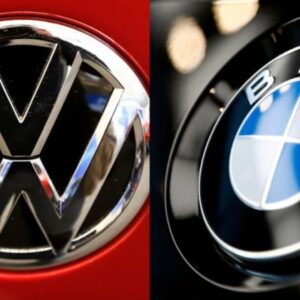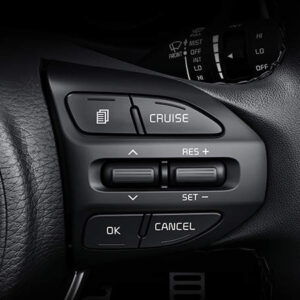What is APR for cars? When it comes time to finance a new or pre-owned car, several terms are important to understand. One such concept is the annual percentage rate, or APR.
The APR expresses the total cost of borrowing which may differ among lenders based on how they set their rates, and the fees they charge. Your credit score and the amount you borrow will also affect the APR on your loan.
What is APR For Cars?
APR stands for annual percentage rate, and it refers to the cost of your loan, which includes the interest rate and additional fees. The APR of your car loan is largely dependent on your credit score. In most cases, the higher your credit score is, the lower your APR will be.

You won’t know your exact loan APR until you start applying for loans. However, it’s important to understand what rate you might qualify for before starting the car buying process.
What Affects an APR for Car Loans?
There are a few factors that contribute to the APR of your car loan. One of the biggest factors is your credit score, which determines your “creditworthiness.” In other words, your credit score indicates to lenders how likely you are to pay back the money you owe.
In general, borrowers with bad credit get a higher APR and borrowers with good credit get a lower APR. This is because lenders see low-credit borrowers as risky or more likely to default on their loans than those with good credit. You usually want to choose a loan with the lowest APR for your situation, because it’s the cheapest option for borrowing money.
The basic scale for credit scores is:
- Bad: 300-629
- Fair: 630-689
- Good: 690-719
- Excellent: 720-850
Keep in mind that some lenders won’t even offer a loan to borrowers with bad credit. If you have poor credit, you might have to find a subprime lender, or a lender with more flexible eligibility requirements, to take out a car loan.
Another factor that impacts the APR of car loans is the type of car you finance. In most cases, new cars have lower APRs while used cars have higher APRs. Shopping around and comparing loans can help you get the best loan terms for your financial situation.
Car Loan APRs by Credit Score
As of 2022, the average interest rate for car loans was 4.07 percent for new cars and 8.62 percent for used cars. However, these rates are just averages—you might get a higher or lower rate based on several personal factors, like your lender and the age of your vehicle.
To understand what car loan interest rate you might qualify for based on your credit score, check out the average rates below for different credit tiers:
- Excellent (750 – 850): 2.96 percent for new, 3.68 percent for used.
- Good (700 – 749): 4.03 percent for new, 5.53 percent for used.
- Fair (650 – 699): 6.75 percent for new, 10.33 percent for used.
- Poor (450 – 649): 12.84 percent for new, 20.43 percent for used.
Why is APR important?
Knowing the APR on a car loan is important because it helps you understand how much borrowing money from that lender will cost you. The lower the APR, the less you’ll pay to finance your car.
When comparing loans side by side, pay attention to the APRs to help identify the least expensive loan. The difference of even just one percentage point can add up over time.
For example, let’s say you’re comparing two $23,000 loans, each with a four-year term. One loan has a 5% APR and the other has a 6% APR. You’d end up paying $503 more in interest on the loan with the 6% APR than you would on the loan at 5% APR.
How Is APR Determined on a Car Loan?
An auto loan is secured by the vehicle that is being financed. How much you pay for that loan—the APR—depends on a number of factors, including:
- Credit score: Your credit score is a key factor in determining the interest rate you get on an auto loan and the APR overall. The higher your credit score is, the more likely you are to get a lower rate.
- Down payment: Having a down payment helps reduce the amount of the loan you need to borrow and, therefore, the total cost of the loan.
- Type of vehicle: Whether the vehicle is new or used plays a critical role in the APR you pay. In general, new vehicles tend to have lower interest rates than used vehicles. Also, automotive brands with a track record for reliability, such as Toyota or Honda, add to the resale value of the model and could result in a lower APR.
- Personal stability: Having proof of stable employment shows the lender you have the income to repay the loan, which will give you a better APR. Lenders also look more favorably on a borrower who’s lived at their current address for some time.
What is the average APR range for a car loan?
The APR for a new car loan for someone with excellent credit can be substantially lower than for someone who has poor credit. Moreover, extra fees from your lender or dealership can increase your APR significantly.
If you choose to finance these charges as part of your car loan, they’ll cost you even more in the long run. Since rates and fees can vary widely, it’s essential to understand interest rates and APR.
Why Do Average Interest Rates Vary for New and Used Vehicles?
Usually, used car loan interest rates are a little higher than the rates for new car loans. That’s because used cars tend to be less reliable than new cars. Charging a higher interest rate protects the lender in case your car breaks down and you can no longer drive it, which would force you to default on the loan.

Most lenders also charge lower APRs on new car loans because new cars are more valuable. If you’re buying a brand-new car with a high price tag, there’s a greater chance that you will need to borrow more money. In this situation, the loan is much more profitable for the lender, so you often get rewarded with a lower APR.
Average Rates for Auto Loans by Lender
Even with a solid credit score, you’ll want to shop around for your auto loan and compare a few different options. Average APRs for car loans vary from lender to lender. Here are some example rate ranges according to Value Penguin.
- Alliant: 3.24 – 18.19 percent
- CapitalOne: 3.99 – 13.98 percent
- PenFed: 1.99 – 18 percent
- PNC Bank: 2.79 – 14.99 percent
How Does a Low APR Save Me Money?
The APR of your car loan has a direct impact on how much you will pay to borrow the money over the lifetime of the loan. That’s why choosing a loan with a low APR is a smart financial move. Finding the lowest rate usually involves comparing several loans before you sign a loan agreement.
You should also consider choosing a short-term loan to save the most money and get the lowest APR. Lenders offer charge lower APRs on shorter term loans because borrowers will take less time to repay the loan. While longer loans can provide lower monthly payments, they cost more in the long run.
Here’s an example. A five-year loan at $28,800 with a 4.96 percent APR will accrue $3,778 over the life of the loan. The same loan amount and term with an 11.93 percent APR will accrue $9,577.
For borrowers with poor credit, that same loan amount and term with an APR of 23.81 percent will cost them $20,721 in interest over the life of the loan. Therefore, a low APR could help you save over $15,000 throughout the term of a car loan.
How To Find Out Your APR On A Car Loan?
Prequalification is an excellent way to find out if you’re able to get a loan and what your estimated costs may be.
You can also ask your dealer or lender about the fees and APR associated with the loan you’re interested in. Then before you sign on the dotted line, carefully review your Truth in Lending (TIL) disclosure, required by the federal Truth in Lending Act (TILA).

This document requires lenders to provide consumers with loan details, such as your annual percentage rate and itemization of amount financed, before the borrower signs a loan agreement. The APR information must be disclosed very clearly on your loan documents, and dealers and lenders can answer any questions you have regarding your costs or payments.
How Do I Calculate APR On A Car Loan?
To calculate the estimated APR on a car loan, we’ve put together a method using computer spreadsheet software. To go that route, you’ll need the following information:
- Loan amount — The total amount you plan to finance, typically the price of the vehicle, minus any down payment or trade-in (a down payment on your auto loan or trade-in will lower the amount you need to finance, which can reduce your monthly payment)
- Loan term — The length of your auto loan
- The loan’s interest rate (this is an estimated rate until you formally apply)
- Certain fees, like origination fees
The first step in calculating APR yourself is calculating your estimated monthly payment.
Calculate your monthly estimated payment
If you already know your estimated monthly loan payment, you can skip this step. If you don’t, you can easily estimate your monthly car payment on a spreadsheet by typing the formula below into a cell.
=PMT(interest rate as a decimal/12, number of months in loan term, loan amount, with fees)
The result is your estimated monthly payment. It will be a negative number, but don’t worry. You didn’t make a mistake. Keep this number handy for calculating your APR.
Let’s say you want to finance $13,000 ($12,500, plus a $500 loan application fee) with a loan term of 60 months and an interest rate of 4%. Here’s what your formula would look like with those numbers plugged in.
=PMT(.04/12, 60, 13000)
Using this example, your spreadsheet would calculate your monthly payment to be $239.41.
Calculate your estimated APR
To estimate your APR on the loan using a spreadsheet, enter the formula below into a cell. This formula assumes that your monthly payment was either calculated in step 1 or otherwise includes fees.
If you didn’t calculate your monthly payment in step 1 or aren’t sure whether the monthly payment you’re using reflects fees, keep in mind that this formula may not be the best way to calculate your estimated APR.
=RATE(number of months in loan term, estimated monthly payment, value of loan minus fees)*12
Using the monthly payment you calculated (-$239.41), here’s what you’d enter into the cell for this loan example.
=RATE(60,-239.41,12500)*12
Entering the formula above would calculate your estimated APR at approximately 5.6%.
What’s a Good Car Loan APR?
In August 2023, commercial banks charged an average APR of 4.98% on 48- and 60-month car loans, according to the Federal Reserve. But keep in mind that interest rates vary by lender, and a range of other factors can affect the APR you’re offered. Here are a few.

Your credit scores
The better credit you have, the lower your loan rate is likely to be. Check your credit scores before you shop for a car so that you have a good idea of where your credit stands overall.
Your loan term
A longer loan term, like 72 or 84 months, can lower your monthly payment, but may come with a higher interest rate than you’d get on a shorter-term loan. And with a longer term, you’ll end up paying more in interest over the life of the loan.
Your loan-to-value ratio
If the amount you want to borrow is significantly less than the value of the car you’re buying — maybe because you made a sizable down payment or have a car with a substantial trade-in value — you may be charged a lower APR. This is because the loan is less of a risk for the lender than a loan to finance the full amount of the car’s value.
Where Can I Get a Car Loan?
There is no shortage of lenders vying to lend you money for the car of your dreams. And with that comes a wide range of car loan package terms and rates. Here are the three most common types of auto lenders.
Online Lenders
The easiest place to start is through an online search, where you’ll quickly discover the countless online lenders from which to choose. You can easily find their estimated rates and terms, along with payment calculators online.
Financial Institutions
While online search is a great start, you’ll gather more in-depth information by visiting or pre-applying online at a financial institution, such as your local bank or credit union. Start your search online, or call directly and speak with a loan officer or auto loan expert.
Ask if they offer pre-approvals to take to the dealership, as this will give you an accurate estimate of how much you’re qualified to borrow and at what APR. It also gives you stronger negotiating power at the dealership.
Car Dealerships
Car dealerships can offer quick and easy financing for all buyer types through partnerships they have with auto finance companies. While it may seem easier to have the car dealer do the loan shopping for you, it’s advisable to also seek rate and terms on your own before going in so you ensure you get the best deal possible.
How To Get a Car Loan
Securing a car loan can be confusing. Here are the general steps to apply for a car loan:
- Determine your budget. Prior to hunting for a loan, first establish your total budget for buying a car, managing payments and dealing with costs such as maintenance, gas or insurance. Additionally, take into account your present and future finances, as it could influence your ability to manage payments and expenses.
- Check your credit score. It’s crucial to understand your credit score, as it can influence the kind of loan you can secure and your interest rate. Use a free credit score monitoring website to check your score, which has no adverse effects.
- Shop around for loans. Considering your budget and credit score, you should shop around for the best loan that meets your needs and payment capabilities. You can find auto loans from various sources, including dealerships, banks, credit unions and online lenders.
- Get preapproved. Securing preapproval can help you negotiate during the loan application process. It also enables you to establish a sensible budget before seeking a vehicle.
- Select your desired vehicle. Once you clearly understand your budget, begin searching for a vehicle. Make sure to try different dealerships to ensure that you find the best prices, rates and loan terms before making your decision.
- Finalize the auto loan. Once you choose your vehicle, be sure to check the details to ensure it matches your agreement. Also, fill out all the required documents and make sure you receive copies before you drive the vehicle off the lot.
FAQs
What APR is too high for a car loan?
The ideal APR for a car loan is one that’s at or below the national average. However, your interest rate largely depends on your credit score, so getting a rate that’s at or below the national average may not be in your favor if you have a low score.
If your interest rate is higher than the national average, take steps to improve your score by paying off existing debt, correcting any credit report errors and making on-time payments.
What is a good APR for a car loan with bad credit?
Anyone with a credit score between 300 and 500—or deep subprime—is considered to have bad credit. The average APR for a deep subprime borrower is 14.08%, according to Experian. Any rate below 14.08% for a borrower with bad credit is ideal.
What is a good interest rate for a 72-month car loan?
A 72-month loan for a car is a long-term loan, and long-term loans typically come with higher interest. While long-term loans translate to lower monthly payments, they result in more interest paid over the life of the loan. With that said, an interest rate of around 5% for a 72-month auto loan is considered ideal.
Above is information about What is APR for cars? that we have compiled. Hopefully, through the above content, you have a more detailed understanding of What affects an APR for car loans? Thank you for reading our post.









